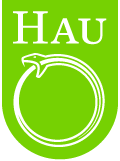Unable to see the diagnosis: Harmed bodies and oil extraction in Peruvian Amazonia
Abstract
This article discusses two distinct notions of harm, wakllichishka and oil harm, and two distinct ways of shaping bodies. Following postcolonial and decolonial insights, I develop an approach that deploys two Indigenous concepts—wakllichishka, and not being able to see the diagnosis—as valid tools of analysis. Kichwa people in northern Peruvian Amazonia use both to analyze the condition of being harmed, illness, and the possibility of recovering. While wakllichishka rests on understandings and practices that assume that bodies are transformable and the locus of human and more-than-human sociality and agency, not being able to see the diagnosis reveals how biomedical and toxicological practices enact bodies as indicators of unspecific conditions and environmental degradation, and as incurable. Using Kichwa analytics shows the situatedness of these practices and counteracts a common disposition to undertake a colonizing reduction that defines our own categories as the only ones adequate for analysis of the consequences of extractive capitalism.
DOI: https://doi.org/10.1086/725342


